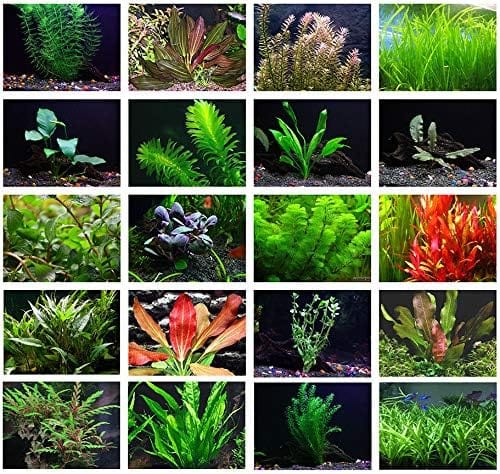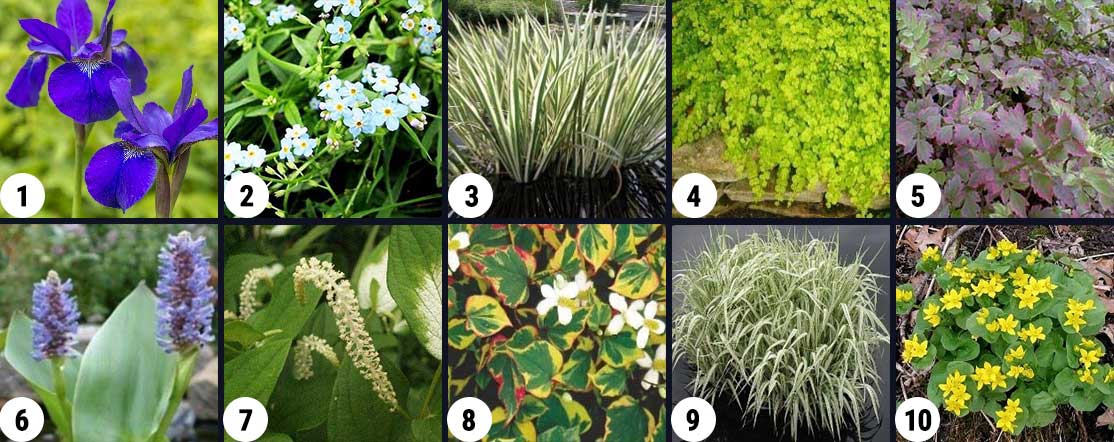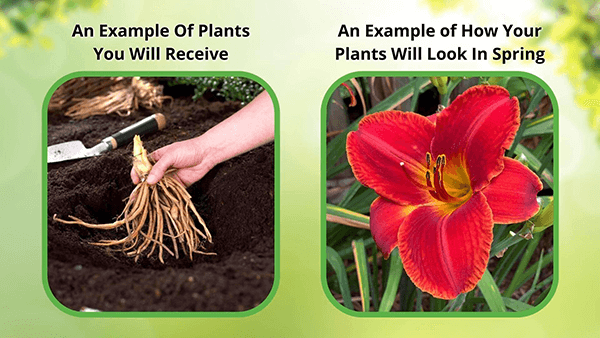10 Water Garden Plants
10 Water Garden Plants
| Order | Percentage Discount | ||
|---|---|---|---|
| 2-5 | 25% Off | ||
| 6-10 | 30% Off | ||
| 11-25 | 35% Off | ||
| 26-50 | 45% Off | ||
| 51+ | 65% Off | ||
Couldn't load pickup availability
Wa.Ok.NE.NH.RI.IN.WI.OH.TX.
10 Water Garden Plants
Water Garden Plants are aquatic plants explicitly grown in ponds and other marine environments. These plants are an essential component of any pond, as they help to maintain the ecological balance of the atmosphere, improve water quality, and provide a natural habitat for fish, amphibians, and other aquatic wildlife. Many types of plants are available on nursery websites. Some of the most popular types of these plants include lilies, lotus, hyacinths, lettuce, and cattails. Each of these plants has its unique characteristics and benefits.
Water lilies
Water lilies are the most recognizable water plants. They float on the water's surface in various colors, from pink and white to yellow and red. These beautiful plants provide shade for fish and other aquatic wildlife, help keep the water cool, and reduce algae growth.
A Favorite Water Garden Plants Are The Lotus Plants
Lotus plants are another popular choice. These plants have large, impressive flowers and are centerpieces in gardens. They are hardy and can survive in various temperatures and water conditions.
Water hyacinth
Water hyacinth and water lettuce are two other popular plants in these gardens. These floating plants help reduce algae growth by shading the water and absorbing nutrients. They are also easy to care for and can be an excellent choice for beginners.
10 Uses For These Garden Plants
Finally, cattails are famous for these gardens as they provide a natural habitat for wildlife, including birds and insects. These plants often create a natural-looking shoreline and can help stabilize the soil around a pond. The plants are an essential and beautiful addition to any waterscape. They provide natural filtration and improve the overall health of the aquatic environment. With so many different types of plants, there will surely be a perfect choice for every enthusiast.
Benefits Of The Ten Garden Plants
Water plants are trendy, not only because they are aesthetically pleasing but also because they increase the biodiversity of the local ecosystem. Such plants help mitigate flood areas and tend to prevent a garden from becoming stale and stagnant as they reduce the number of nutrients entering it, thus preventing your beautiful garden from becoming a stinky mess.
From our perspective, most plants people purchase for wet landscapes are floating or emerging. Generally, those with gardens want to buy the floating variety, far and away; one of the most popular purchases is our water garden plant packages.
Here, you get nine plants, most floating, for very little money. Depending upon the size of your garden, you will generally need at least two of these packages to propagate your garden.
Consider purchasing a three-square hedge package, a square-stem bullrush package, a soft-stem bulrush, or standard spike rush packages for your emerging plants.
These Garden Plants Can Create A Diverse Garden
To have a diverse and pleasing garden, you generally need both types of Water Garden plants to provide your garden with the aesthetics you want and the emerging plants to control the garden from flooding and keep your water reasonably clean.
You can identify it by its greenish flowers that grow on stalks about 6 inches long. Conclusion A wetland is a portion of land (usually flooded) where water is the main factor in creating or modifying the environment. Wetlands are a valuable resource for animals, plants, and people.
This Is How Your Plants Will Look upon Delivery
Shipping date depends on the date displayed and chosen when you order from the product's page.
We only accept returns on plants verified dead. If you think your plants have died, we offer a 1 year warranty, please use use this File a Claim Link to verify dead plants and start with return warranty process.









